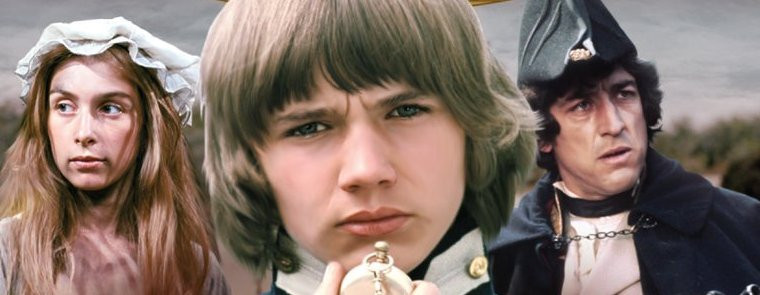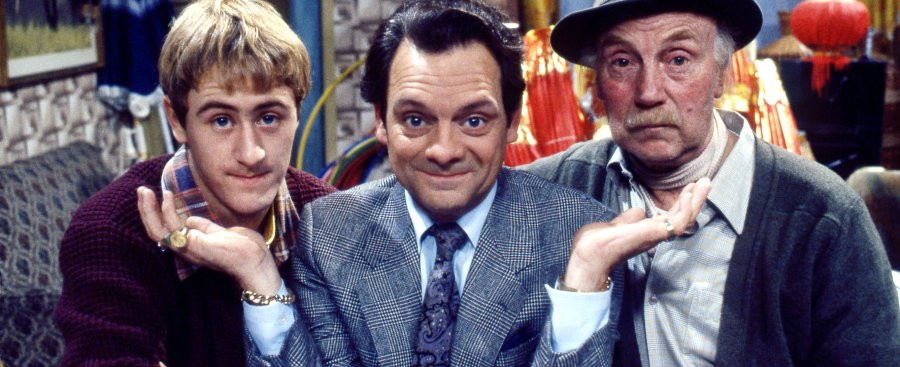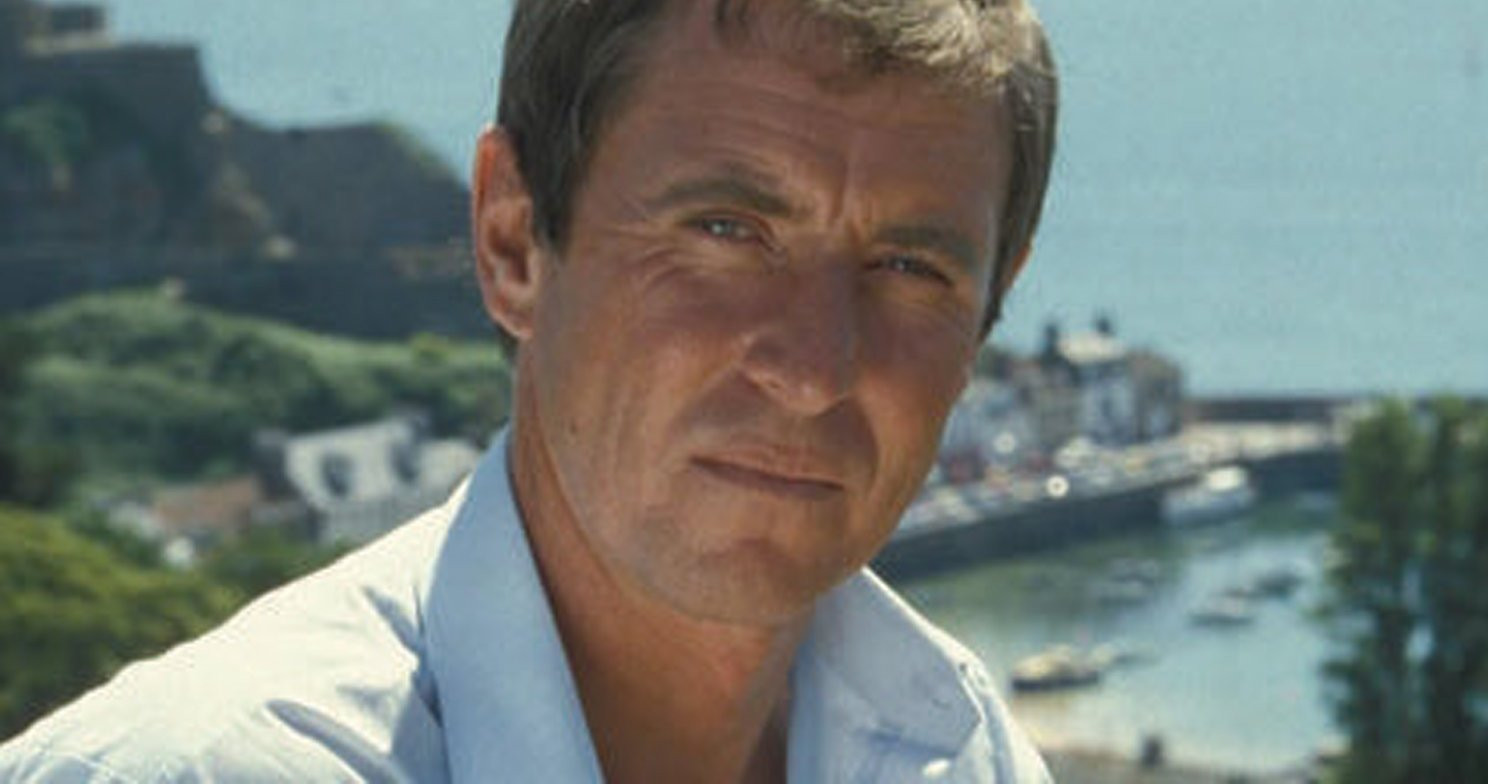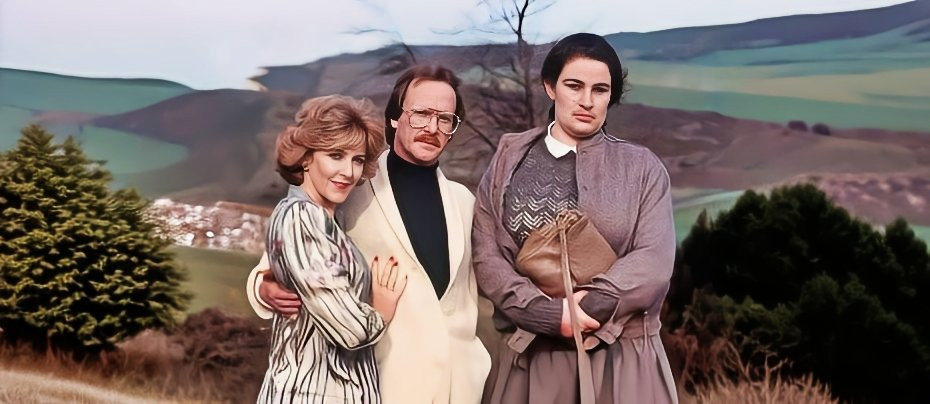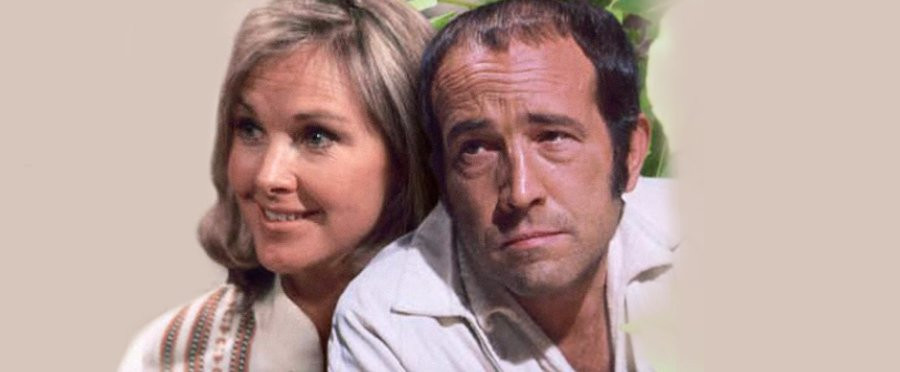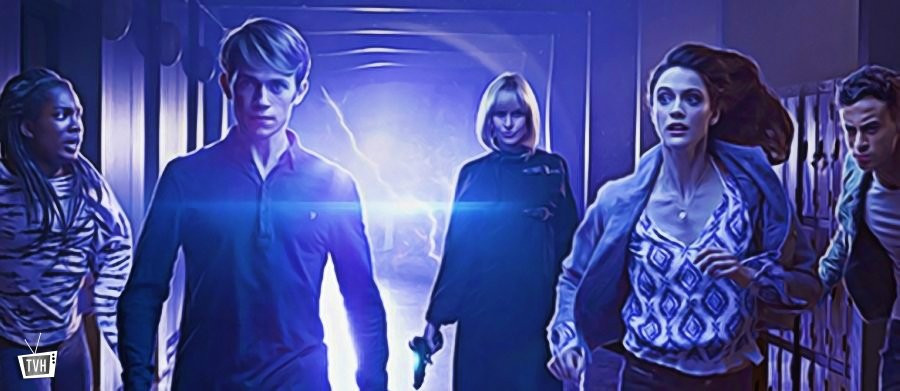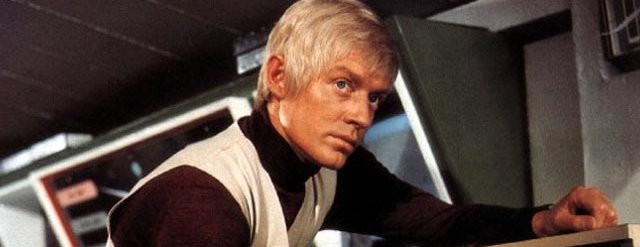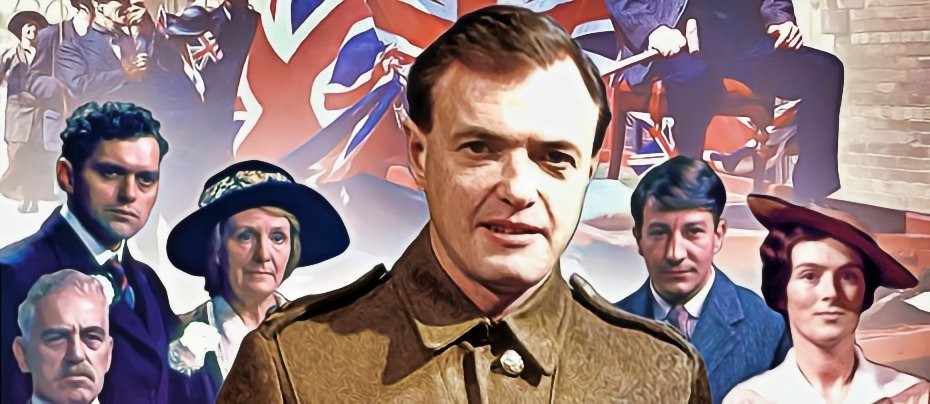Image of the Fendahl (1977)
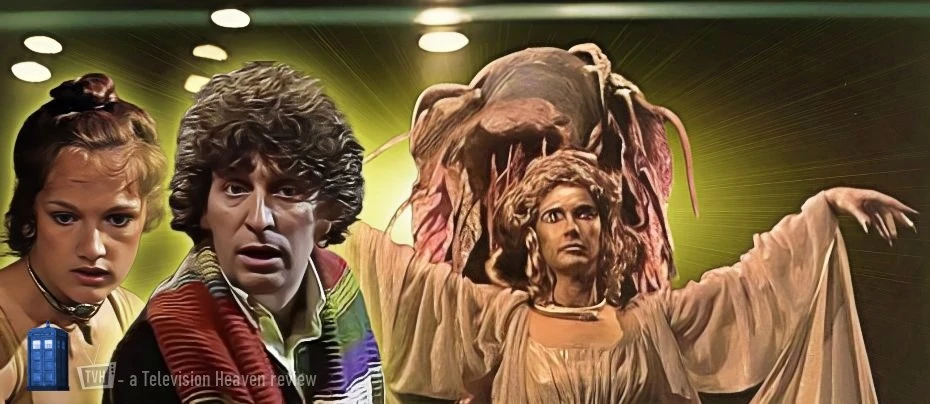
Review by Daniel Tessier
Chris Boucher’s final script, Image of the Fendahl continues the writer’s habit of drawing noted and literary science fiction, but this time delivers it with a good dose of old-fashioned gothic horror. It’s also the last serial to be commissioned and edited by the great Robert Holmes, one of the greatest scriptwriters in the series’ history. Officially, he’s credited for the job on the following serial, The Sun Makers, but as he wrote the script for that one, it was incoming script editor Anthony Read who edited, as well as about half of the story due to last minute changes being required.
This partly explains why Image of the Fendahl feels like the end of an era. While Doctor Who never quite gave up its spooky horror stories, they were few and far between after this, with Read and new producer Graham Williams being ordered by the powers that be to lighten the show and make it more kid-friendly. The preceding serial, The Invisible Enemy, had introduced everyone’s favourite robot dog K-9, the biggest step to kiddifying the programme. The decision to keep the character on was made too late to be worked into Fendahl, so the poor mutt is out of commission in this story due to circuit corrosion. There would be similarly spurious excuses to leave him out of play in the future, but they would be largely because the writers were fed up with him.
However, the serial also feels like a product of an earlier era, perhaps due to drawing so heavily on 1950s sci-fi. Boucher explicitly drew on Kurt Vonnegut’s 1959 novel The Sirens of Titan and the 1967 Hammer film Quatermass and the Pit (itself based on the 1958 serial) to write this story. Both deal with aliens influencing the development of mankind, but it’s the Quatermass parallels that are strongest. As in Quatermass and the Pit, the discovery of an anomalous human skull kicks off a bizarre sequence of events, which leads to terrible discoveries about the origins of witchcraft, hauntings, psychic powers and human life itself.
It's a slow-paced and wordy serial, with George Spenton-Foster, formerly a producer on Out of the Unknown, directing the production with a careful, meticulous style that only makes it feel slower. Yet there’s no denying the atmosphere of the story; it’s haunting and palpably doom-laden, with the central threat of the Fendahl seeming truly unstoppable for once.
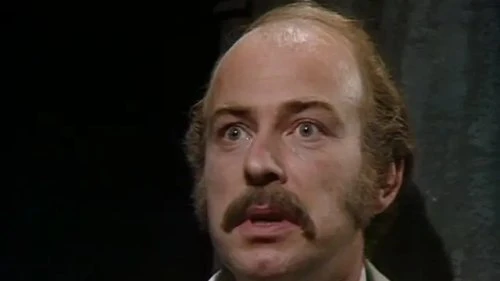
We follow a group of scientists based at Fetch Priory, who are analysing a fossilised human skull that is 12 million years old – millions of years older than should be possible. Denis Lill (Survivors, Outside Edge, Only Fools and Horses) affects a thick Germanic accent as Professor Fendelman, a scientist skilled in both anthropology and engineering, who has developed a time scanner which will probe the skull’s origins. Lill’s Only Fools wife Wanda Ventham (UFO, The Rag Trade, Fallen Hero) plays Thea Ransome, while Edward Arthur portrays the increasingly exasperated Adam Colby. The final scientist, the marvellously named Maximillian Stael played by Scott Fredericks (Triangle), is secretly the leader of a Satanic coven, a surprisingly common side career in these sorts of things.
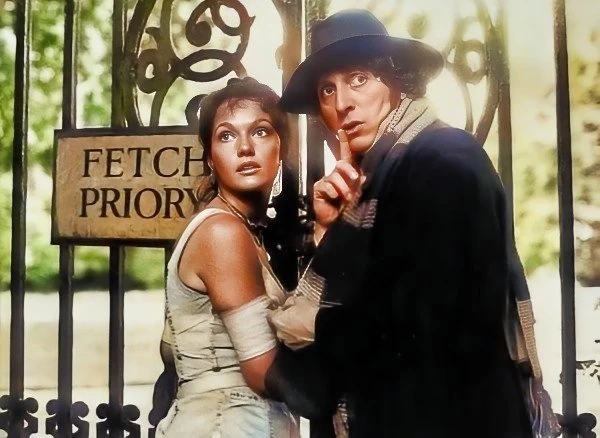
Meanwhile, the TARDIS detects a potentially catastrophic hole in time, leading the Doctor and Leela to land in the area around the Priory. It is, of course, Fendelman’s time scanner which is causing the temporal damage, but first the travellers have to deal with something deadly that is stalking the woods. While the Doctor feels the presence of the unseen creature, paralysing him, Adam discovers the body of a hitchhiker while out for a walk, left decomposing impossibly rapidly. Fendelman orders the Priory locked down, leading to a confrontation between security guard Mitchell and cook Martha Tyler. Mitchell is played by Derek Martin, best known now as EastEnders’ Charlie Slater, in his first credited acting role for Doctor Who after years of appearances as an extra and work as part of stunt team HAVOC.
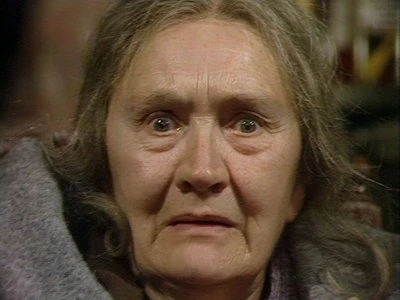
Mitchell is no match for Ma Tyler, though. Not only is she the Priory cook, she’s also the local white witch, a force almost as unstoppable as the Fendahl. Played by the wonderful Daphne Heard (To the Manor Born, Don’t Forget to Write), Ma Tyler takes no nonsense from anyone, least of all her grandson Jack (Geoffrey Hinsliff – Coronation Street, Brass). The only thing that is able to slow her down is the terrifying force of death that she senses in the Priory, so traumatising that it leaves her stupefied. The Doctor manages to snap her out of it, by reciting a terrible fruitcake recipe that she disagrees with so fervently it brings her back to reality.
Everything converges on the Priory, where the skull has begun to display very strange properties. Not only does it feature a pentagram built into its molecular structure, but it is also glowing with a sinister energy and has hypnotic powers. One of the series’ most frightening cliffhangers occurs at the end of episode two, when the Doctor, glibly checking out the skull as he snoops about the Priory, is suddenly compelled to touch it. Unable to remove his hand, he screams in pain as the skull grows brighter and brighter…
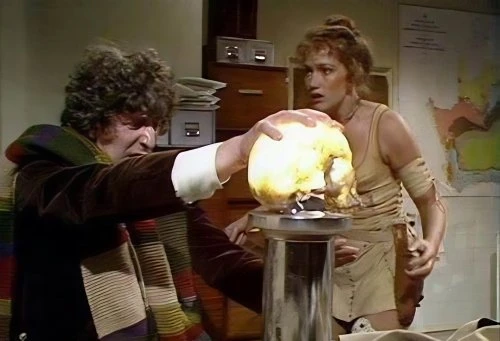
It’s fortunate that he has Leela with him. It’s a standout serial for Louise Jameson, who gets to portray both Leela’s intelligence and instincts – particularly in the resolution to that cliffhanger, where she rescues the Doctor by kicking his chair out from under him. Leela always displays a warrior’s courage, but even she is terrified by the power of the Fendahl, which can paralyse its victims with a thought.
So, the Fendahl. The Doctor deduces that the skull is all that remains of an ancient creature that evolved on the fifth planet of the solar system, between Mars and Jupiter. The Fendahl was the ultimate predator, able to consume the very life force of any living thing. The Time Lords, he believes, destroyed the planet, leaving its remains as the asteroid belt (a shattered planet being a once popular theory of the origin of the asteroids). However, part of the Fendahl survived, landing on Earth and laying dormant for millions of years until now, when the time scanner has reenergised it. Its first manifestations are the invisible creatures prowling the woods, but what it needs is a host to become its core. Then it will be able to feed on all life on the Earth. The Doctor delivers a truly chilling line: "There are four thousand million people here on your planet, and if I'm right, within a year, there will just be one left alive. Just one.”
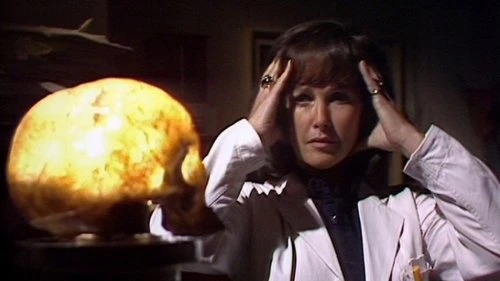
It's Thea Ransome who is chosen to become the Fendahl core. You have to feel a little sorry for Wanda Ventham, who doesn’t get to do much with her character before she’s possessed, after which she’s covered in gold paint with enormous eyes painted on her eyelids, devoid of any dialogue. Nonetheless, the depiction of the Fendahl works well: while it looks like a rather attractive woman under a ton of make-up, its careful and completely silent direction of events is quite unnerving, and makes it clear that this is a force that cannot be reasoned with. The Doctor, used to talking his enemies into submission, is almost powerless against the Fendahl.
Even worse are its other parts, the Fendahleen. A gestalt creature, the Fendahl converts its followers into huge, slug-like creatures, becoming a complete entity once it has twelve supporting the core. While they’re not the most sophisticated monster effects on the series, the rubbery worms, with their array of constantly twitching tendrils, are thoroughly unpleasant, and the idea of being turned into one is quite horrific. While deadly, they have a particular weakness: salt. The Doctor theorises that this is the source of folkloric tales of salt being able to bind witches and demons. He produces an elaborate scientific rationalisation, but it’s not needed: everyone knows that you can kill slugs with salt.
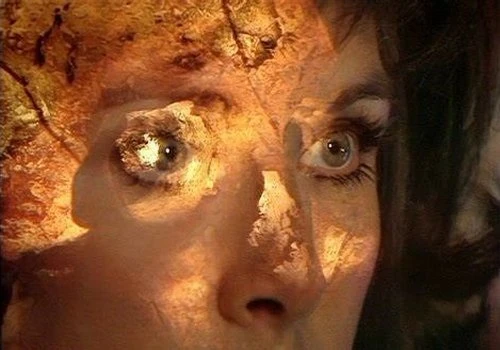
Image of the Fendahl is a story that gets by on atmosphere and unsettling implications. It’s suggested that the Fendahl has manipulated human destiny so that the circumstances will eventually arise that allow it to reconstruct itself, with those present at the Priory having been somehow destined to be there (Fendelman, in particular, has had his ancestry guided, hence his name). There are some standout scenes that stick in the memory, not least one where the Doctor gives Stael a gun so that he can kill himself before he is transformed into a Fendahleen (the original scripted version was more graphic, but as recorded we just hear the gunshot out of camera).
However, its slow pace and somewhat ill thought out script (logistical inconsistencies abound) make watching it a frustrating experience as well. Many of the best Doctor Who stories don’t make a lick of sense, but keep things moving with enough verve and excitement to help us overlook that. Image of the Fendahl wants you to think about the story, which does mean it’s easier to spot the joins and go, “Hang on a minute…”
Still, as the last gasp of Doctor Who’s real horror era and the final script from one of the series’ most intelligent writers, Image of the Fendahl is well worth spending time on. Immediately following this, Boucher went on to be the script editor of Blake's 7, writing numerous episodes and rewriting many more. It was Robert Holmes who was initially offered the role, instead suggesting Boucher for the job, and in return was offered the chance to write for the new series. Holmes went on to create The Nightmare Man for the BBC, returning to Doctor Who as a guest writer in the mid-eighties.


